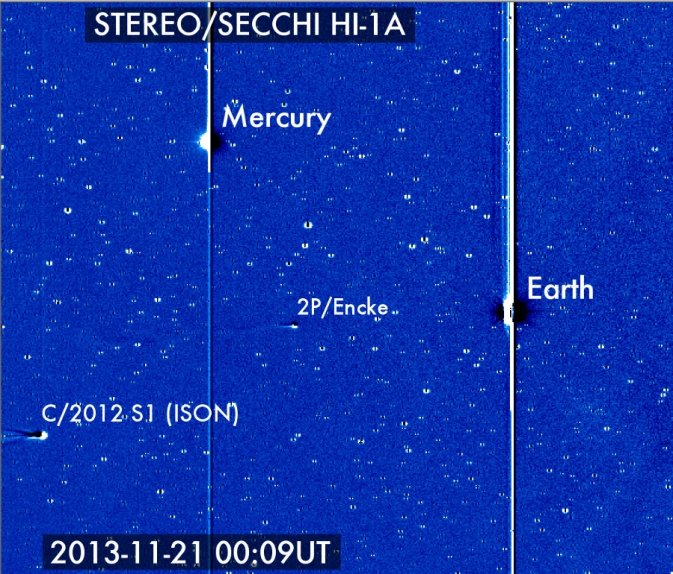NASA.gov
November 22, 2013

Image Credit:
Karl Battams/NASA/STEREO/CIOC
Comet ISON entered the field of view of the HI-1 camera on NASA’s Solar Terrestrial Relations Observatory, or STEREO, on Nov. 21, 2013, and the comet shows up clearly, appearing to still be intact.

Image Credit:
Karl Battams/NASA/STEREO/CIOC
Officially labeled as Comet C/2012 S1, ISON can be seen in these images along with Earth, Mercury and Comet 2P/Encke. The tails streaking out from behind both comets can be seen moving along with the steady stream of particles – called the solar wind – that flows out from the sun.
The Emergency Election Sale is now live! Get 30% to 60% off our most popular products today!


